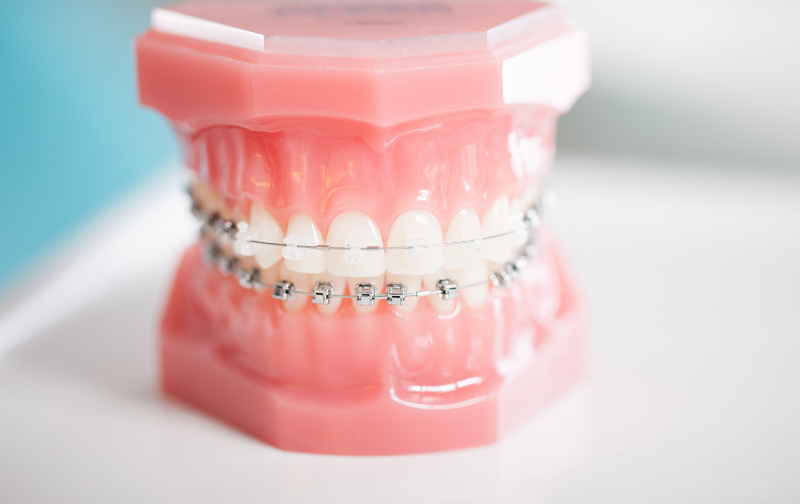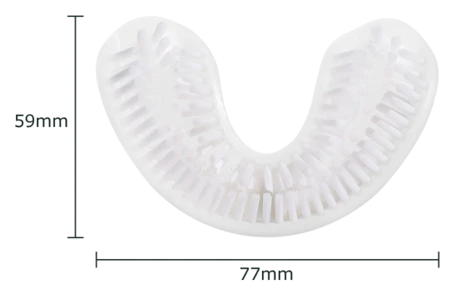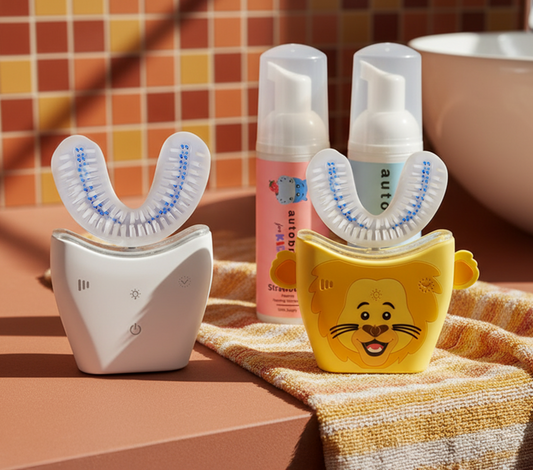
How to Care for Braces
If you have children who are getting braces for the first time, this is the blog for you!
First things first – it’s important to be aware that oral care can be trickier for children with braces. Metal braces come with crevices where small bits of food can get trapped. Trapped food can lead to oral issues like plaque and bad bacteria growth which can lead to tooth decay.
To avoid your kiddo from unnecessary aches and discomfort, this blog will go over how to take care of metal braces including an advanced brushing routine, metal braces essentials, and other braces tips and tricks that will keep their smile looking great and feeling comfortable.
How to Brush Your Teeth with Metal Braces
What is the most important step to keeping teeth healthy while wearing braces?
You guessed it! – Maintaining a proper brushing routine.
Whether you or you kiddo have metal braces, it’s important to be mindful about what kind of toothpaste and mouthwash you use. Check the ingredients and ensure your toothpaste doesn’t include anything too abrasive that could potentially damage your braces.
🦷️Toothy Tip: Our mint foaming toothpaste uses only the best, natural ingredients that are tough on plaque but gentle on the mouth. It also doubles as a mouthwash!
Orthodontists commonly recommend using a soft bristled toothbrush to avoid damaging your braces too. All AutoBrush toothbrushes are braces-friendly! Our u-shaped double-sided brush head wraps around teeth and braces to clean all surface areas at once. This helps kiddos and adults alike never miss a spot.

But is brushing braces the same as brushing teeth?
Almost! Your child’s braces will require a bit more attention as shown in the steps below.
- Remove rubber elastics. Start by removing any elastics on the braces that will inhibit your child’s ability to get a proper clean. Replace the old bands with new elastics after they are finished brushing.
- Brush braces & teeth. Focus on cleaning between the braces wires and pins in order to remove the excess food particles. This will help to avoid plaque buildup and staining.
- Floss teeth. Dental floss picks are a convenient way to maintain the daily habit of flossing. However if your child is struggling to floss around their braces, ask your orthodontist about other flosser alternatives.
- Use mouthwash. Mouthwash is safe for braces and an excellent addition to your kiddo’s oral care routine in order to flush out any lingering bad bacteria.
Metal Braces Essentials

Braces aren't always the most comfortable, but the following braces must-haves items can help make them more bearable.
- Interdental brush. This is a small brush that can easily get in between the metal wires and brackets to clean out any food or plaque that might be stuck.
- Floss. Floss threaders or picks help you floss around the braces.
- Tongue scraper. Automatic tongue scrapers are great at removing excess build-up and bacteria from the tongue -- helping the breath stay fresh.
- Orthodontic wax. If the metal brackets are rubbing against your child’s cheeks or gums and causing irritation, then you can use wax to cover them up. This will help to create a barrier.
- Orthodontic silicone. This is similar to wax but more durable. It can also be used to cover brackets that are poking the mouth and cheeks.
- Orthodontic rubber bands. These bands are used to help move the teeth into place.
Other Metal Braces Tips & Tricks

In addition to brushing and flossing, here are a couple of our favorite braces tips and tricks to keep them in great condition.
- Wear a mouthguard when playing sports. This will help protect your child’s braces from getting damaged if they fall or are hit in the face while playing sports. It also protects their lips and cheeks from injury.
- Eat soft food. Avoid snacking on hard and sticky foods like nuts, bubblegum, or hard candy. These types of food are known to damage braces.
- Visit your orthodontist regularly. Your child’s orthodontist will check that the braces are doing their job and make any adjustments if necessary. Remember: it’s common for the braces to feel uncomfortable or tighter if adjustments are made.
- Visit your dentist. Your kiddo’s dentist will ensure that their teeth are remaining healthy and check for any signs of tooth decay.
Final Thoughts
Metal braces require a bit more care than regular teeth, but if you follow these tips, your child will be able to take care of them with no problem.
Do you have any other tips for taking care of metal braces? Share your favorites with us @TheAutoBrush on Instagram, Facebook, TikTok, and Twitter!
What to Read Next…
What is the Difference: Hydroxyapatite vs Fluoride Toothpaste
Clinical Study: The Science Behind AutoBrush
The Ultimate Guide to Your Child's Dental Health: Age 6-12+












